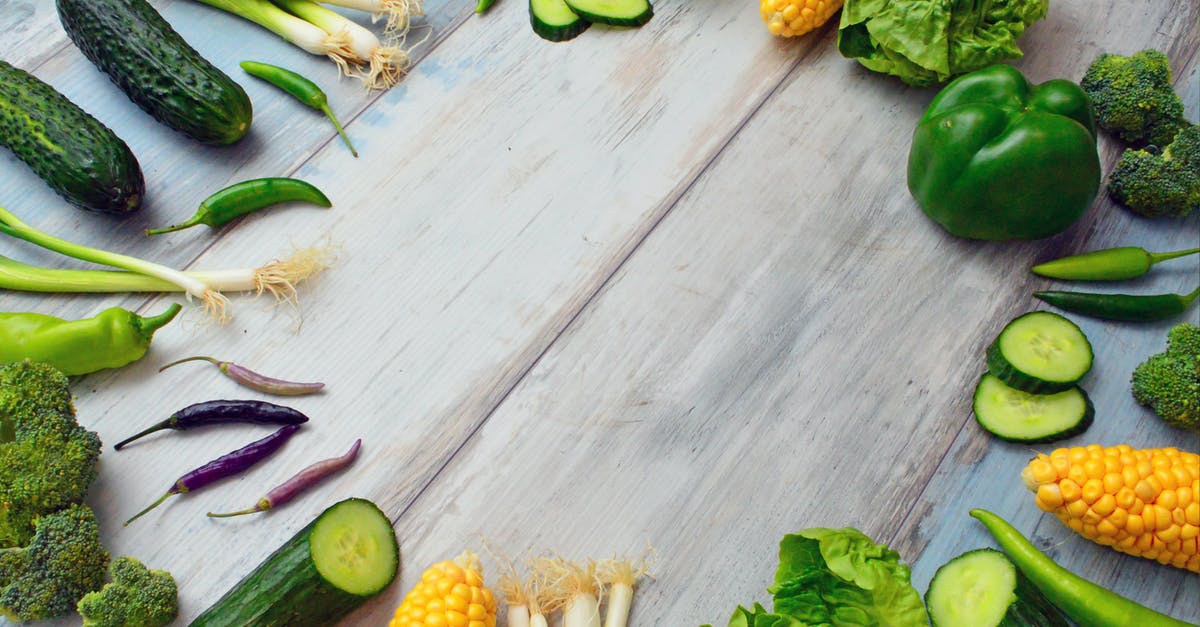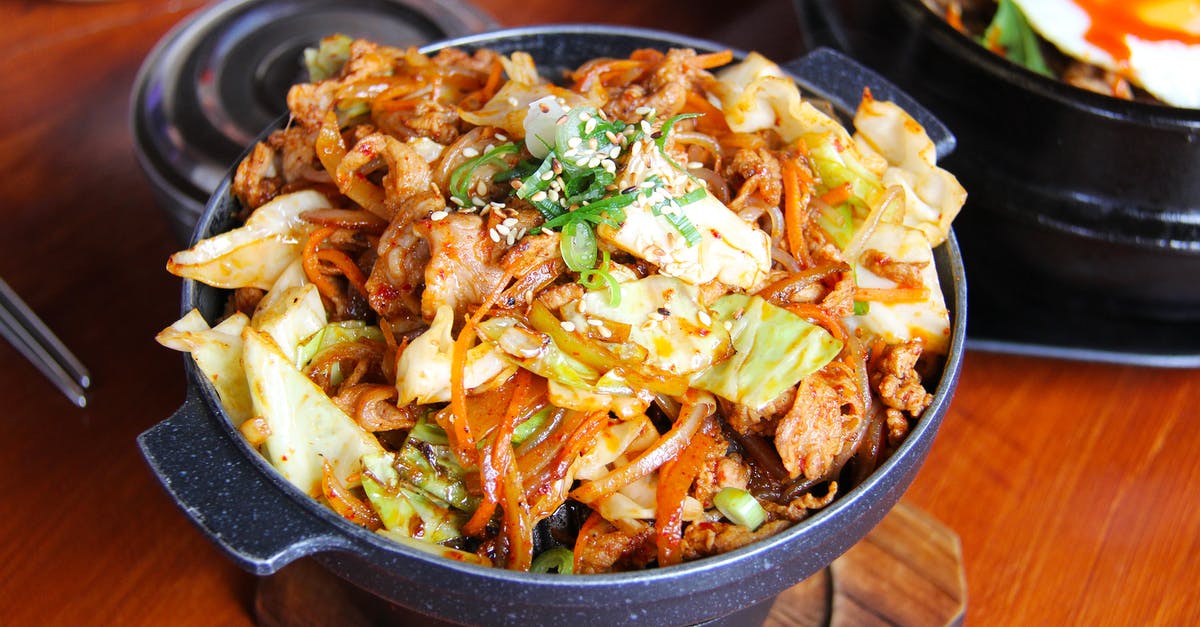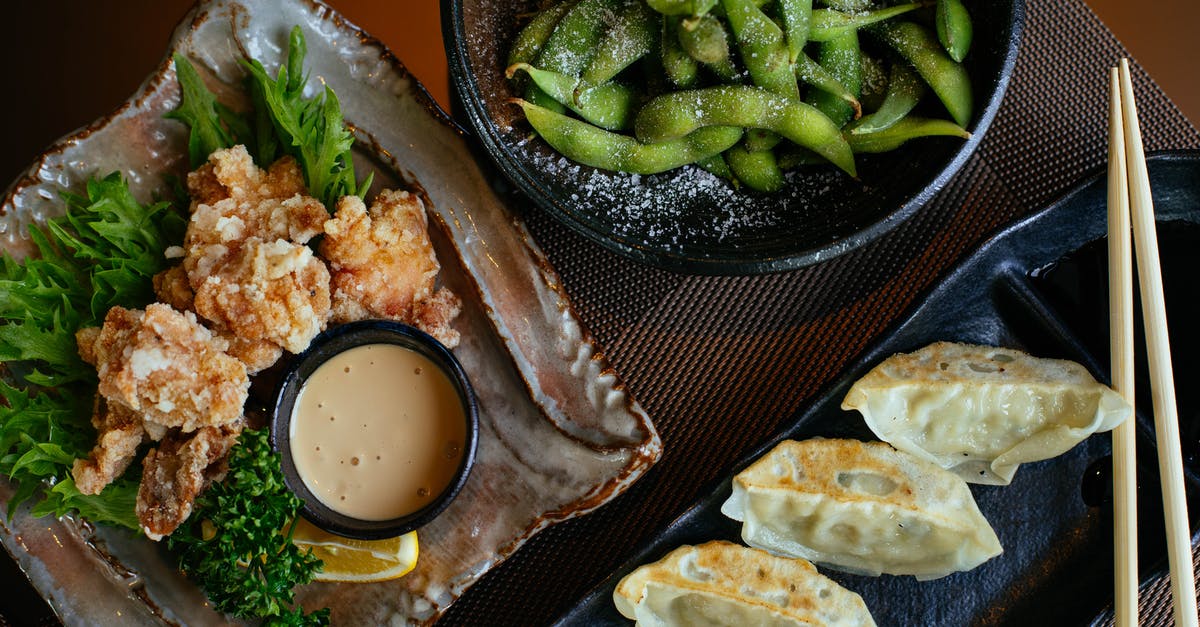what cooking oil(s) produce the crispiest and least greasy fried foods

Which cooking oils can be used for frying to produce the crispiest and least greasy foods. Do different foods require different oils? If so, what is best for battered foods, and which is best for non battered foods *potatoes, chicken wings, etc.)
Best Answer
The desired texture of 'crispness' is the result of many factors, and oil choice is generally not the biggest factor. Consider a french fry. The generally accepted best practice for fries is a blanch and finish method. This allows the fry to be cooked throughout and have a crisp surface, without being overdone and leathery. To accomplish this, the finish frying is generally done at a higher temperature than the initial blanching.
This blanching step can be done, and is easier to do at home, in a different liquid. I often simmer chicken wings in a flavorful stock, with some aromatics. You then want to cool, and especially if cooking in water, dry the food. This allows the par cooking to finish. Now, when finished from this cooled state, the outside can crisp without overcooking the inside.
I use this practice when preparing food at festivals, and it is the common practice in most restaurants to prepare crisply fried food.
The final crisping of potatoes and the skin of chicken comes from driving the water out. (This is what produces the bubbles) Here temperature is key, as the temperature must be high enough to turn the internal water into steam, but not too high to toughen and overcook.
All that being said, different cultures use a variety of oils for essentially the same effects. Crispness can be accomplish using any number of oils. The practicality is about cost, smoke point, adding unwanted flavors, and dietary concerns. There is a nice chart of smoke points over here. Note ghee (clarified butter) has a high smoke point and would impart amazing flavor (assuming you like butter) but would be expensive to fry in.
The crispness then is generated by relatively high heat, so par cook chicken wings and potatoes, etc. Cut battered veggies thin, so they can cook quickly. Choose a fat that you like and can afford, and use technique to get the best crispness.
As for greasiness, this often goes hand in hand. Greasiness, or amount of grease left on the food after cooking is temperature dependent and depends on crowding and draining after cooking.
If food is cooked at a lower temperature, then expelling of water is less vigorous. As you remove the food from the fat, the oil has a better chance of clinging if the steam moving out was less volume.
Crowding is important here. If there is too much food in the frying vessel, then the space between pieces of food turns into a steam area, instead of hot oil area. Now food is cooking in a moist ~212 F environment instead of the oil temperature. Those areas will not be hot enough to get crisp or expel extra oil and lose the greasiness. Good rule of thumb is you should be able to easily stir and move the food around while frying.
Finally, draining. Have a rack or platter with absorbent paper. Remove small amounts quickly. If using a 'spider' you can use an up and down motion to shake a little excess fat off. Now place in a single layer to avoid steaming. These final steps help, but if the food comes out flabby and soaked in grease already, they won't fix anything.
Pictures about "what cooking oil(s) produce the crispiest and least greasy fried foods"



Which oil is best for fried?
SHOP DEEP FRYERSPeanut oil is a particularly popular choice for deep-frying. If you're making a deep-fried dish that calls for vegetable oil and you're running low, peanut oil would be a great substitute. Corn oil is a kind of vegetable oil\u2014and it has a high smoke point like most other vegetable oils (around 450\u02da).How do you make fried food not greasy?
Use a deep-fry thermometer and adjust the heat while frying to maintain a steady temperature. Fry in small batches to prevent the oil temperature from dropping too low, which can lead to greasy food. Briefly drain fried food on a rack or absorbent paper.What is the healthiest oil for deep frying?
High-oleic canola oil contains more monounsaturated and less polyunsaturated fats. This makes it more stable, allowing for greater heat tolerance and a better choice for deep frying when compared to other oils high in polyunsaturated fats, such as corn, peanut and safflower, per the Canola Council.What oil do most restaurants use to fry?
3 Popular Types of Oil Used in Commercial Deep Fryers- Canola Oil. Canola oil is derived from the rapeseed plant. ...
- Peanut Oil. ...
- Blended Oil.
Most Dangerous Cooking (Avoid these Completely) 2022
More answers regarding what cooking oil(s) produce the crispiest and least greasy fried foods
Answer 2
Seeing that crispness has been addressed in another answer, I would like to add some points on greasiness. The best solution is to roast the vegetables without oil (in contrast to grilling or stir frying) and optionally add oil after the process. This is typically how Mediterranean veggies are prepared. This can be achieved using an oven rack. Alternatively, a cast iron frying pan can be used. Non-stick and steel pans are not suitable.
To reduce the oiliness of deep fried food, the temperature has to be within a certain range, neither too hot nor too cold. Once fried, the food can be placed on a plate with absorbent kitchen tissues. This will soak up some of the excess oil.
Sources: Stack Exchange - This article follows the attribution requirements of Stack Exchange and is licensed under CC BY-SA 3.0.
Images: Polina Tankilevitch, Adonyi Gábor, Pixabay, Valeria Boltneva
